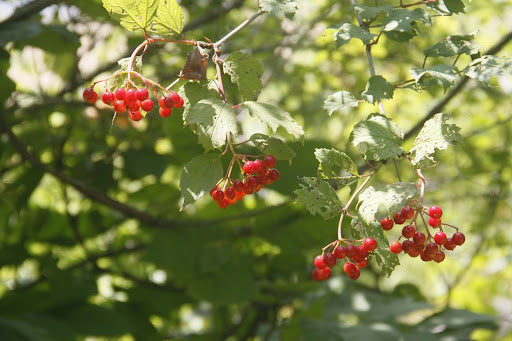
As Christmas approaches, we embrace the holiday spirit as we deck the halls with boughs of holly and hum along to the jingles of Christmas carols. In this festive season, apart from basking in the holiday spirit by celebrating Christmas at Gardens By The Bay or enjoying the flora theme display at Orchard Road, let’s rejoice with our very own version of the famous Christmas holly, the Tit-Berry.
With its vivid fruits sprinkled against the luscious green leaves, it resembles holly bushes closely with its beautiful ruby berry fruit. However, it is lighter in terms of its leaf shade and comprises a wider silhouette compared to the holly’s more diminutive, spiky form.
So, what makes the Tit-Berry so locally unique? Can those vibrant, juicy-like berries be eaten? What makes them such a fantastic ornamental foliage for the paths of Singapore?
Let’s find out!
Before sprouting into brilliant shades of orange and red, the Tit-Berry produces bunches of small white flowers during the blooming season. Although the flowers of the Tit-Berry appear unassuming initially against the background of its leafy greenery, the end product erupts into a beautiful amalgamation of bright red and orange berries.
These beautiful shrubs can be found flourishing in abundance, especially on the mangrove and coastal grounds of Singapore, particularly in Pulau Ubin, Kranji Reservoir and various other areas surrounded by large bodies of water.
In fact, Tit-Berry shrubs are hardy in nature, resilient against drought or waterlogged soils. Rain or shine, these striking ornamental foliage will bloom regardless.
Of course, the Tit-Berry shrub isn’t simply just a decorative feature. From the fruit to the bark, the different components of Tit-Berry have a range of uses as well!
Apart from its decorative properties, the Tit-Berry shrub is, in fact, home to a variety of wildlife species. It provides sustenance and shelter to a range of butterfly and moth species such as the cleora injectaria and nacaduba pavana singapura. The butterflies and moths will lay their eggs on the leaves, which become the food for the developing caterpillars.
For Tit-Berry shrubs to flourish and grow, the seeds are eaten by birds and dispersed to sprout in other areas. Before the fruits develop, the flowers will be pollinated by bees to be fertilised, allowing the fruits to cultivate and bloom.
Seeing the harmony of cooperation amidst the plant and animals, isn’t it a magical process?
Tit-Berries are part and parcel of wildlife. They are beneficial for humans too, with various medicinal properties from the leaves to the roots.
The leaves of tit-berry consist of medicinal properties used to treat symptoms such as stomach aches and fever. In fact, the leaves can be used in multiple ways, it can be extracted for mouthwash, to ease rashes and is seen as a cure for fractures.
Although the wood of the Tit-Berry is not the most durable material for building purposes, it is generally used for indoor or temporary structures, fuel for fire and canes. The root and the bark also contain healing attributes to treat burns and cure abdomen issues.
Here at Smiling Flora, not only do we offer traditional celebratory flowers such as the single sunflower bouquet, we understand the significance of appreciating the flora and fauna in our local backyard. To learn more about other types of local flowers, check out our article on The National Flower Of Singapore Roads: Bougainvillea. Or perhaps, if you’re looking for unique Christmas gift ideas, check out our preserved flower dome ideas for your loved ones. Order your flowers online today!